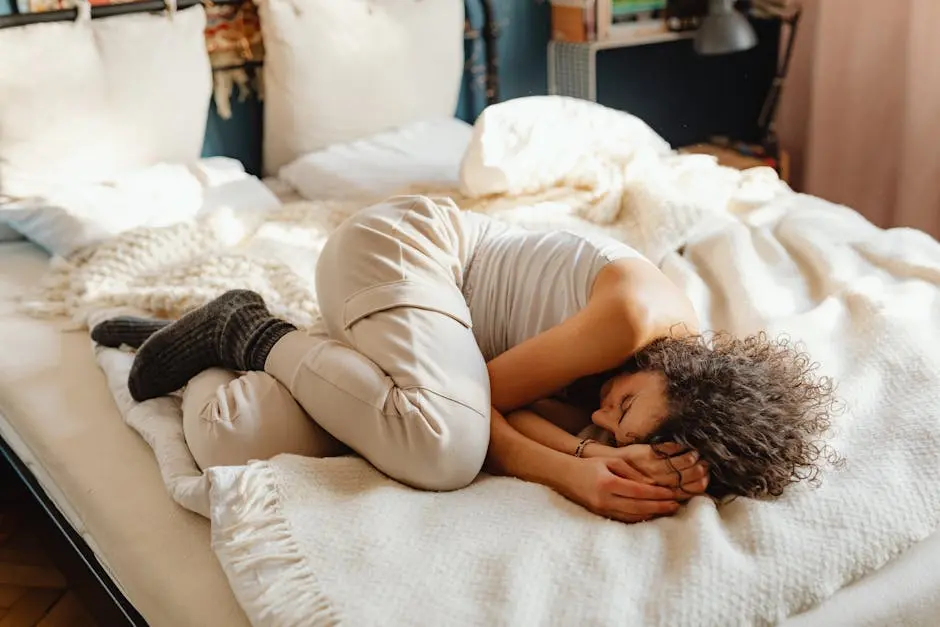
Does Sleeping Position Affect Back Tension Relief?
Share
The way you position your body while sleeping can have a significant impact on your overall comfort and pain relief. For those struggling with back tension, understanding the role of sleeping positions is crucial. This FAQ explores whether your sleeping posture can truly influence back tension relief.
Understanding Back Tension and Its Causes
Back tension is often the result of poor posture, muscle strain, or underlying medical conditions. Knowing what triggers your discomfort is the first step toward finding a solution.
The impact of back tension goes beyond mere discomfort; it can disrupt your daily routine and overall well-being. Often stemming from factors like prolonged sitting, improper workstation setups, or even stress, its causes are multifaceted. Awareness and proactive measures play vital roles in minimizing tension.
Many people underestimate how lifestyle choices contribute to back tension. For instance, a sedentary lifestyle can exacerbate tension, as prolonged periods without movement can lead to stiffness and discomfort. Regular physical activity and ergonomic adjustments can help mitigate these effects.
Common Sleeping Positions and Their Impact
Different sleeping positions, such as on your back, side, or stomach, can affect back tension in various ways. Understanding how each posture influences spinal alignment is key to determining the best position for you.
Sleeping on your back is often touted as the best for spinal alignment, as it evenly distributes weight and minimizes pressure points along the spine. Experts from Ohio State Medical Center recommend this position especially for those experiencing back pain.
Side sleeping can also be beneficial, provided a supportive pillow is used to keep the neck aligned with the spine. It helps reduce tension on the back and can be especially comfortable for people with sleep apnea or acid reflux, as emphasized in our article about upper back pillows.
Sleeping on the stomach tends to be the hardest on the back because it can lead to a misalignment in the neck and spine. However, placing a small pillow under the abdomen can alleviate some of this tension by maintaining the spine’s natural curve.
The Science Behind Sleeping Posture and Spinal Alignment
Proper spinal alignment while sleeping can minimize pressure on the spine and alleviate tension. Understanding the science behind posture and alignment can help you make informed decisions about your sleeping habits.
The science underscores the importance of maintaining a neutral spine while sleeping. A neutral spinal alignment means keeping your spine in a position that closely resembles its natural curve, reducing stress on muscles and joints.
Using the right pillow is a critical element in fostering optimal spinal alignment. A supportive pillow helps position the neck and shoulders comfortably, preventing overnight strain and aiding in tension relief.
Sleeping posture significantly influences how restorative your sleep is. As per studies on the benefits of back sleeper pillows, correct spinal alignment supports recovery processes by reducing undue pressure and facilitating muscle relaxation.
Tips for Optimizing Your Sleeping Position
Simple adjustments, such as using the right pillow or mattress, can enhance support and alignment. Here’s how to optimize your sleep environment for maximum back tension relief.
Selecting a mattress that supports your sleep style is essential. A firmer mattress generally helps in keeping the spine well-aligned for back sleepers, while softer options might suit side sleepers by providing adequate cushion for the shoulders and hips.
Incorporate stretching or yoga into your pre-sleep routine. Gentle stretching helps relax muscles and improve flexibility, preparing your body for a restful sleep. Combining this with a supportive pillow can significantly ease back tension.
Adjust pillows around your body to maintain a supportive sleep environment. For side sleepers, placing a pillow between the knees can ensure hip alignment. Back sleepers might benefit from a pillow below the knees to reduce lumbar pressure.
When to Consider Consulting a Professional
If back tension persists despite changes in your sleeping habits, it may be time to consult with a healthcare professional. They can provide tailored advice and interventions to help you find relief.
Persistent back tension could indicate deeper health issues that need professional assessment. Conditions like herniated discs or arthritis require medical diagnosis and targeted treatments beyond adjustments in sleep posture.
Consulting an orthopedic specialist can guide you in selecting the right therapeutic solutions, like orthopedic pillows specifically designed to alleviate tension and promote spinal health. Explore our news section for more insights.
Wrapping Up: The Link Between Sleep Posture and Back Relief
Choosing the right sleeping position is essential for alleviating back tension. While individual preferences and needs may vary, making small adjustments to your sleep habits can contribute to significant improvements in comfort and pain relief. Always consider consulting with a healthcare professional for tailored advice.

